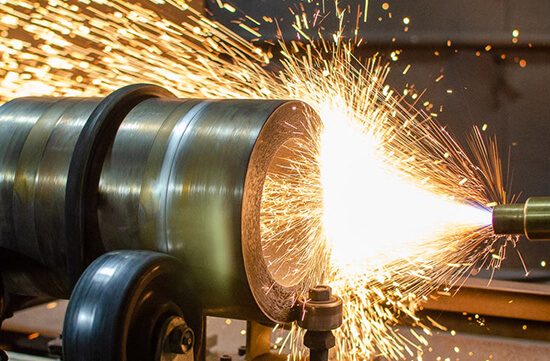The difference between Laser Cladding Technology and Thermal Spraying?

Laser Cladding Technology and thermal spraying are two methods often considered interchangeable due to their similar outcomes. However, are they truly the same? Can one completely replace the other? Let’s delve into a detailed analysis.
The most significant difference between Laser Cladding Technology and thermal spraying lies in their processes. Laser Cladding Technology is a hardfacing technique that utilizes lasers to completely melt powder materials, fusing them with the substrate surface to form a protective layer. Consequently, laser-clad coatings are generally denser, with a stronger metallurgical bond between the coating and the substrate. In contrast, thermal spraying processes tend to create coatings with more porosity and rely on a mechanical bond between the coating and the substrate.
One of the distinctive features of Laser Cladding Technology is its ability to operate at lower temperatures. Unlike traditional methods like Tungsten Inert Gas Welding, which require temperatures as high as 6100°C, Laser Cladding can achieve satisfactory results at significantly lower temperatures. Thermal spraying offers various techniques, employing heat sources like arcs, plasma arcs, lasers, or gas combustion. However, these methods typically demand higher operating temperatures. Therefore, the choice between the two techniques should be guided by your specific temperature requirements.
Additionally, Laser Cladding Technology often results in thicker coatings with superior wear resistance. If your primary concern is wear and corrosion resistance, Laser Cladding might be the preferable choice. However, if you have diverse requirements beyond wear resistance, thermal spraying could be a suitable solution. Thermal sprayed coatings are generally thinner and more controllable, offering a smoother surface. If precise control over coating thickness is crucial for your application, thermal spraying is the optimal choice.
Furthermore, in comparison to thermal spraying, Laser Cladding Technology is more environmentally friendly, causing minimal pollution and posing fewer risks to human safety.
Understanding these differences might seem subtle, but they underline the fact that Laser Cladding Technology and thermal spraying are fundamentally distinct processes. In this era of rapid technological advancement, Deewi Automation is eager to explore more technical questions alongside you. Together, let’s unlock the limitless possibilities of the future.
